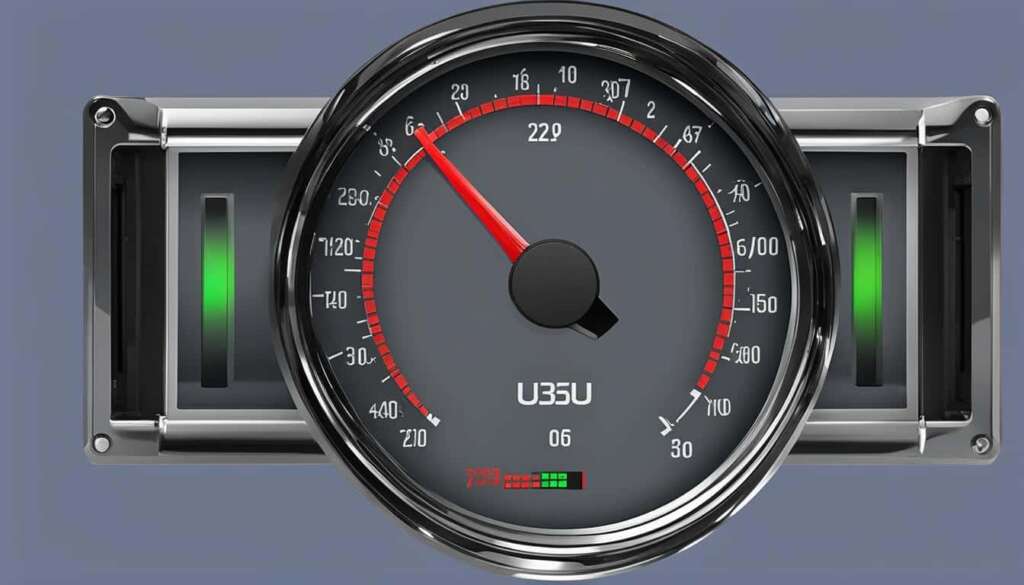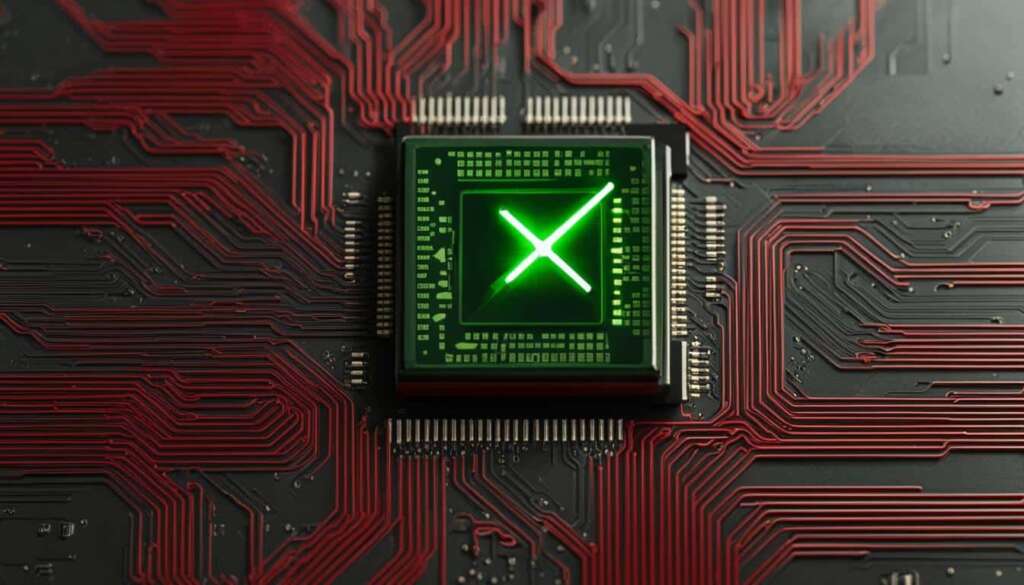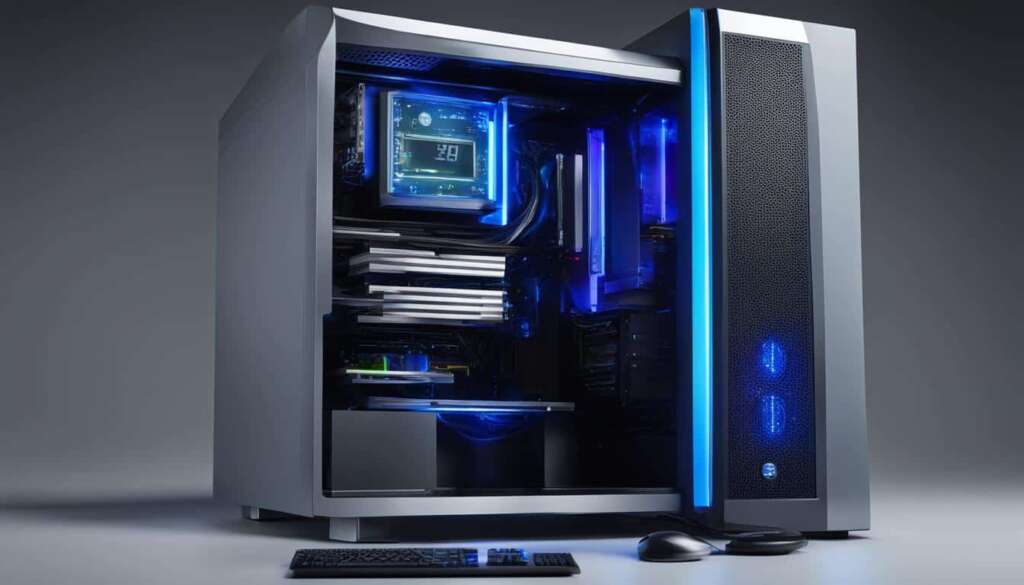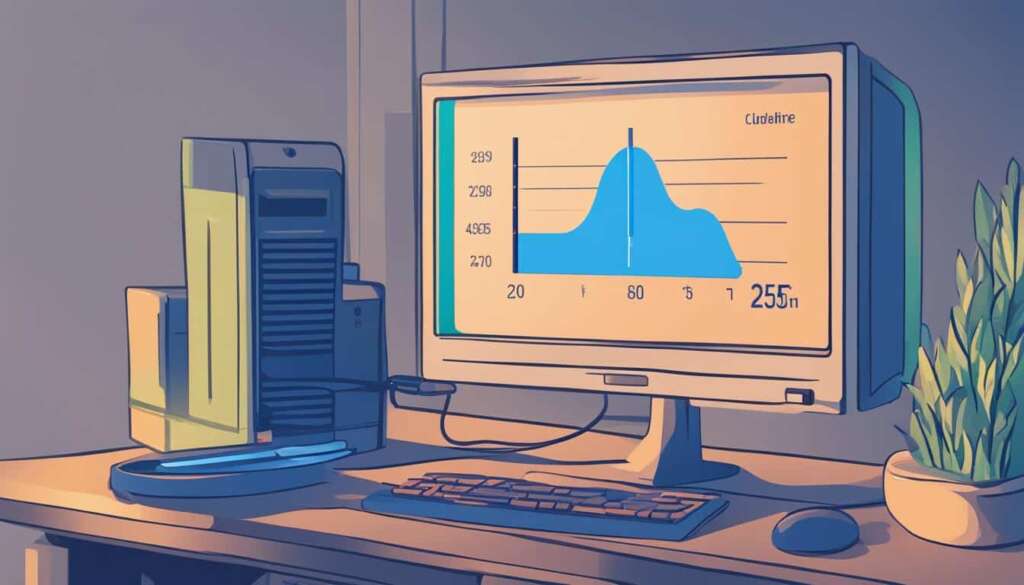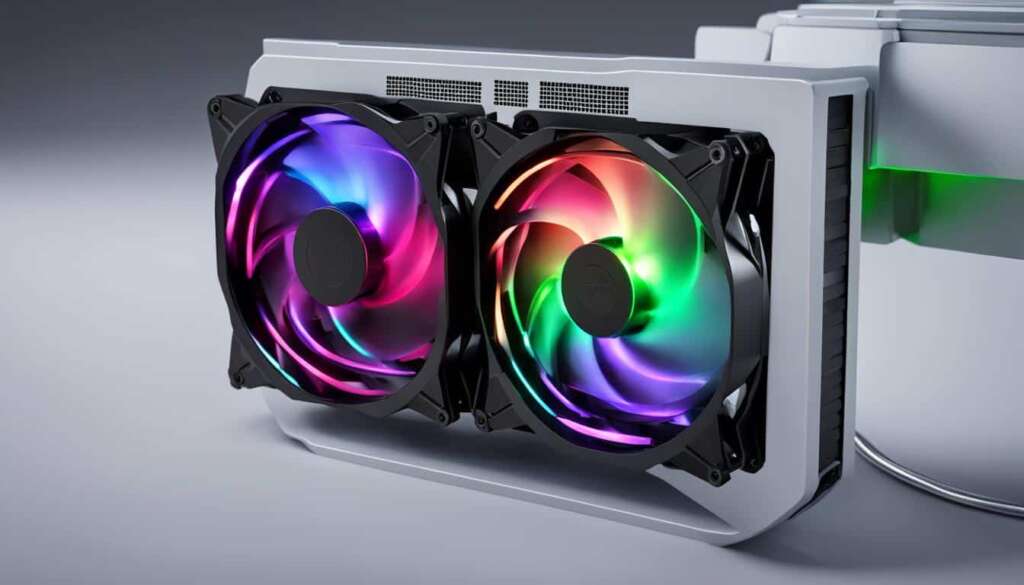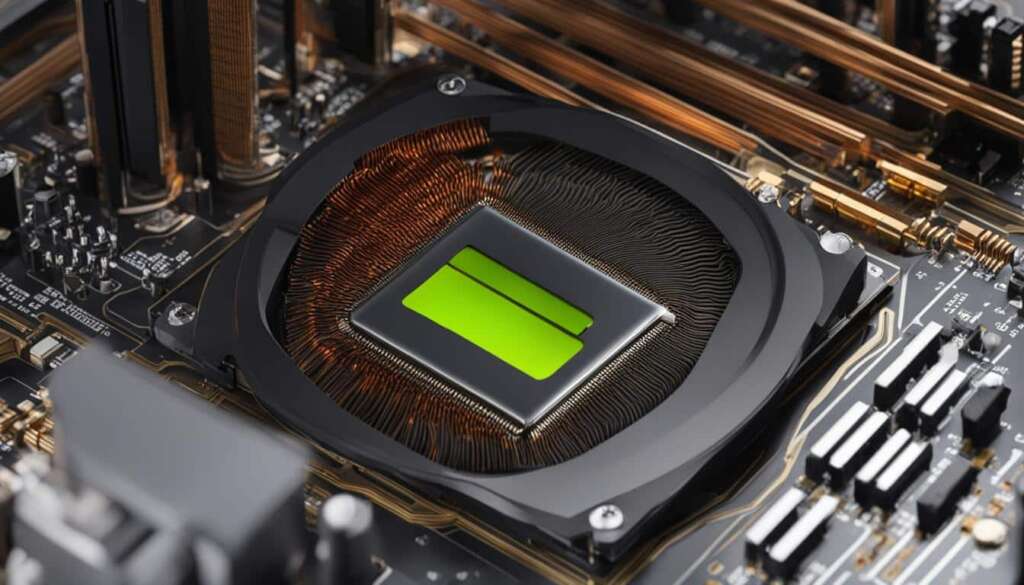Table of Contents
The CPU temperature is an important factor for the performance and safety of a computer. If the CPU gets too hot, it can cause damage to the system and result in decreased performance or even a complete failure. The ideal temperature range for a computer’s CPU is around 35-45°C (95-113°F) during normal idle use and 55-65°C (131-149°F) during heavy usage such as gaming or running intensive applications. Intel recommends keeping CPUs below 70°C, while AMD suggests temperatures remain below 61°C. If the CPU consistently exceeds these temperature ranges, it may be necessary to upgrade the cooling system or take other measures to reduce heat buildup.
Key Takeaways
- Maintaining a good CPU temperature is crucial for optimal computer performance and preventing CPU damage.
- The ideal CPU temperature range is around 35-45°C (95-113°F) during normal use and 55-65°C (131-149°F) during heavy usage.
- Exceeding the recommended temperature ranges can lead to system damage, decreased performance, or complete failure.
- Regular monitoring and proper cooling measures can help manage CPU temperature effectively.
- Consulting a professional tech repairman may be necessary for diagnosing and resolving overheating issues.
Importance of Maintaining a Good CPU Temp
Overheating can have detrimental effects on both the computer and its user. It can lead to hardware failure, resulting in the loss of valuable data and the need for costly repairs or replacements. When a CPU operates at high temperatures for extended periods, the components within the system are subjected to increased stress, causing them to degrade more quickly. This can lead to a shortened lifespan of the entire system, affecting its longevity and performance.
The consequences of overheating are not limited to the CPU alone. Excessive heat can also impact other critical components, such as fans, making them less effective and reducing their overall lifespan. This further exacerbates the cooling problem, potentially leading to a cascade of issues throughout the system.
By maintaining a good CPU temperature within the recommended thermal range, you can mitigate the risk of overheating-related problems and ensure the longevity and optimal performance of your computer.
Let’s take a closer look at the possible consequences of overheating:
“Hardware failure resulting in data loss”
“Degradation of system components”
As seen in the image above, overheating can lead to critical issues that impact the overall functionality and lifespan of your computer.
| Consequences of Overheating | Effects |
|---|---|
| Hardware Failure | Loss of data, system crashes, complete failure |
| Degradation of Components | Shortened lifespan, reduced performance |
| Data Loss | Irretrievable loss of important files and documents |
| System Longevity | Reduced overall lifespan of the computer |
By keeping your CPU temperature within the recommended range, you can effectively prevent these issues from occurring and maintain the optimal functioning of your system.
How to Monitor and Check CPU Temp
Checking and monitoring the CPU temperature is crucial for identifying potential overheating issues. By keeping track of the temperature, users can take necessary measures to prevent damage to their system.
BIOS/UEFI Temperature Monitoring
One way to check CPU temperature is through the computer’s BIOS/UEFI settings menu. This provides real-time readings of various sensors in the system, including the CPU temperature. To access the BIOS/UEFI, you need to restart your computer and press the appropriate key during startup (commonly Delete or F2). Once inside the BIOS/UEFI, navigate to the hardware or monitoring section to find the CPU temperature.
Temperature Monitoring Software
In addition to the BIOS/UEFI option, there are also dedicated temperature monitoring software programs available. These programs provide real-time temperature readings and allow users to track changes over time, providing a more detailed analysis of system performance.
Some popular temperature monitoring software programs include:
- Core Temp: A lightweight and easy-to-use program that displays CPU temperature and other relevant information in real-time. It supports a wide range of processors, making it suitable for various systems.
- SpeedFan: This software not only monitors CPU temperature, but also allows users to adjust fan speeds and monitor hard drive temperatures. It provides detailed information and customizable alerts.
- HWMonitor: A comprehensive monitoring tool that displays CPU temperature, as well as other hardware components such as graphics card and hard drive temperatures. It offers real-time monitoring and customizable threshold alerts.
These software programs can be downloaded from their respective websites and installed on your computer. They provide a user-friendly interface and offer advanced features to help users manage and monitor CPU temperature effectively.
| Software | Description | Compatibility |
|---|---|---|
| Core Temp | A lightweight program that displays CPU temperature and other relevant information in real-time | Compatible with a wide range of processors |
| SpeedFan | Monitors CPU temperature, allows fan speed adjustments, and monitors hard drive temperatures | Compatible with various systems |
| HWMonitor | Comprehensive monitoring tool that displays CPU temperature, as well as other hardware components | Compatible with a wide range of hardware |
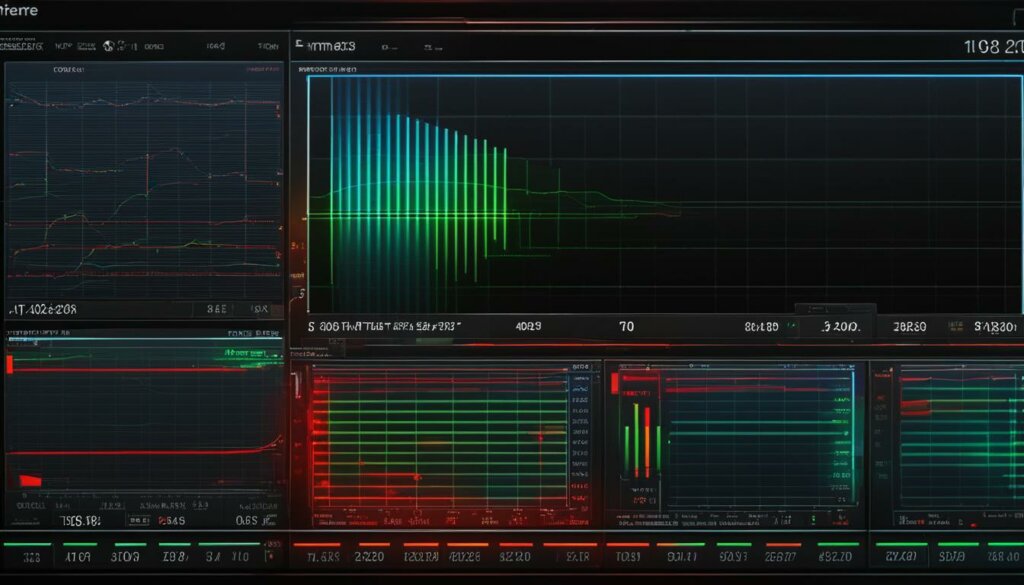
Using these software programs provides an easy and convenient way to monitor CPU temperature, allowing users to stay informed and take appropriate action to prevent overheating and potential damage to their systems.
Tips for Managing CPU Temperature
To manage CPU temperature and ensure optimal performance and longevity, it is important to implement certain measures. By following these tips, you can effectively control the heat generated by your processor and prevent potential issues caused by high temperatures.
Cleaning Dust Particles
Over time, dust particles can accumulate inside your computer’s case, clogging up the cooling components and obstructing airflow. Regularly cleaning the dust is essential to maintain proper airflow and prevent heat buildup. Take the necessary precautions and use compressed air or a soft brush to gently remove the dust particles from the fans, heatsinks, and other cooling components.
Improving Airflow
Poor airflow is a common cause of overheating. By optimizing the airflow within your computer case, you can help dissipate heat more effectively. Here are a few suggestions:
- Ensure that all internal fans are working properly and positioned correctly.
- Consider installing additional fans if necessary to enhance air circulation.
- Avoid blocking air vents or obstructing the path of airflow within the case.
Upgrading Thermal Paste
The thermal paste is a compound applied between the CPU and its heatsink to facilitate heat transfer. Over time, the thermal paste can dry out or degrade, resulting in poor heat dissipation. Upgrading the thermal paste with a high-quality and efficient alternative helps improve heat transfer, keeping the CPU temperature within optimal limits.
Proper Cooling System
If your computer consistently experiences high CPU temperatures despite cleaning, improving airflow, and upgrading thermal paste, it may be necessary to invest in a new cooling system. Consider purchasing a suitable CPU cooler or upgrading to a liquid cooling solution to effectively cool your processor.
Professional Tech Repairman
If you’re experiencing persistent overheating issues or you’re unsure about managing the CPU temperature on your own, it is advisable to seek assistance from a professional tech repairman. A qualified technician can accurately diagnose the problem, recommend the appropriate cooling solutions, and ensure that your computer remains in optimal working condition.
By implementing these tips and taking proactive measures to manage CPU temperature, you can minimize the risk of heat-related issues and keep your computer running smoothly.
Conclusion
Maintaining an optimal CPU temperature is crucial for ensuring peak PC performance and longevity. By keeping the temperature within the recommended ranges, users can prevent overheating issues that can lead to hardware failure and data loss.
Regular monitoring and proactive measures, such as improving airflow and cleaning dust particles, are essential in optimizing CPU temperature. Additionally, upgrading the thermal paste and investing in a proper cooling system can further enhance temperature management.
However, it is important to note that if CPU temperatures consistently exceed safe temperature guidelines, professional assistance from a tech repairman should be sought. They can accurately diagnose any underlying issues and provide expert solutions to prevent further damage.
By following these guidelines and taking necessary steps, users can ensure their computers operate at their best, with optimized PC performance and a reduced risk of encountering problems caused by high CPU temperatures.
FAQ
Is CPU temperature important for computer performance?
Yes, CPU temperature is crucial for computer performance. If the CPU gets too hot, it can result in decreased performance or even a complete failure.
What is the ideal temperature range for a computer’s CPU?
The ideal temperature range for a computer’s CPU is around 35-45°C (95-113°F) during normal idle use and 55-65°C (131-149°F) during heavy usage.
How can overheating affect a computer?
Overheating can cause hardware failure, data loss, and shorter lifespans for components. It can also affect other parts of the system, such as fans, reducing their effectiveness and lifespan.
How can I check the CPU temperature of my computer?
You can check the CPU temperature from within the BIOS/UEFI settings menu or by using software programs like Core Temp, SpeedFan, or HWMonitor.
What can I do to manage CPU temperature?
To manage CPU temperature, it is recommended to regularly clean dust particles from within the case, enhance air circulation by installing additional fans, upgrade thermal paste on the processor, and invest in a new cooling system if necessary.


